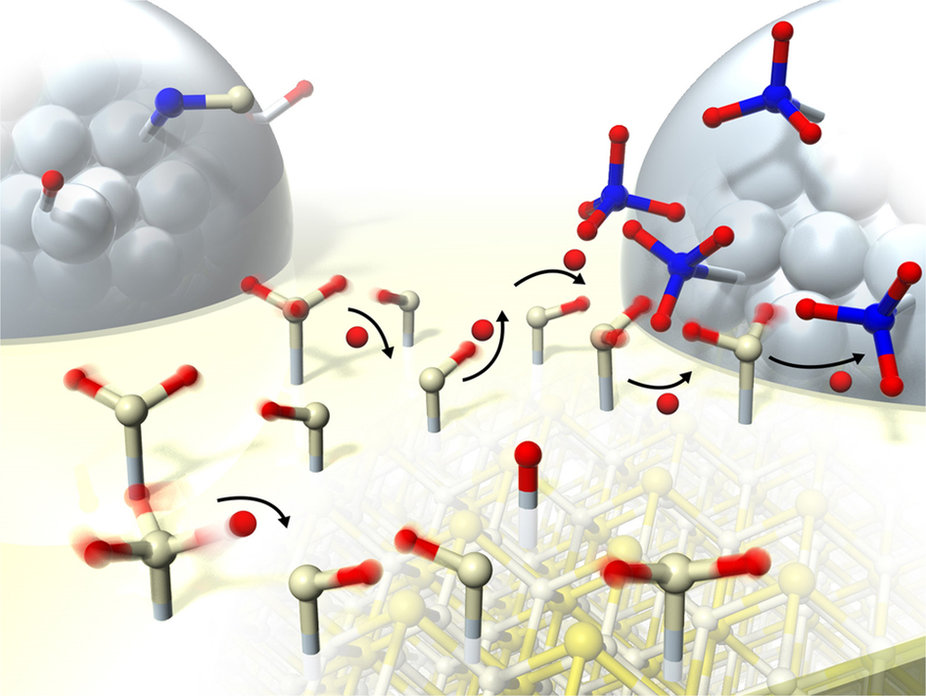表面プロトニクスが触媒反応を促進する
Surface Protonics Promotes Catalysis
2016年12月1日 Scientific Reports 6 : 38007 doi: 10.1038/srep38007

表面プロトニクスのおかげで、1%Pd/CeO2触媒を用いた電場中でのメタンの触媒水蒸気改質による水素生成が、473 Kでも進行する。速度論的解析によって、触媒反応と電場の相乗効果が立証され、電場を印加すると、反応速度の水分圧依存性が強まり、低い温度範囲での見かけ活性化エネルギーが3分の1になることが明らかになった。さらに、Operando–IR測定によって、触媒表面に吸着した水を介したプロトン伝導が電場印加時に生じることが明らかになった。速度論的逆同位体効果に基づいて、PdとCeO2の界面でのプロトン衝突によってメタンが活性化されていることがわかった。触媒表面でのプロトン伝導は、低温でのメタンの活性化に重要な役割を果たしている。この報告は、表面プロトニクスによる触媒反応の促進について初めてのものである。
Corresponding Author
Catalytic steam reforming of methane for hydrogen production proceeds even at 473 K over 1 wt% Pd/CeO2 catalyst in an electric field, thanks to the surface protonics. Kinetic analyses demonstrated the synergetic effect between catalytic reaction and electric field, revealing strengthened water pressure dependence of the reaction rate when applying an electric field, with one-third the apparent activation energy at the lower reaction temperature range. Operando–IR measurements revealed that proton conduction via adsorbed water on the catalyst surface occurred during electric field application. Methane was activated by proton collision at the Pd–CeO2 interface, based on the inverse kinetic isotope effect. Proton conduction on the catalyst surface plays an important role in methane activation at low temperature. This report is the first describing promotion of the catalytic reaction by surface protonics.

